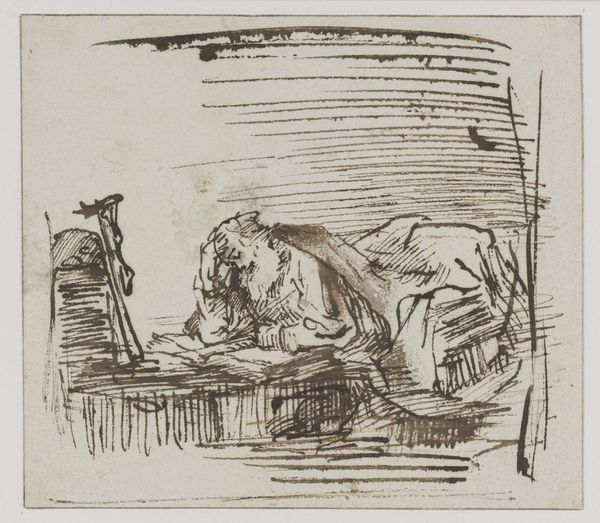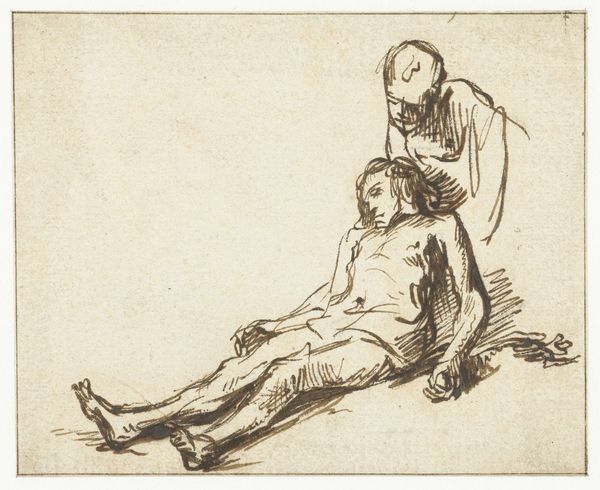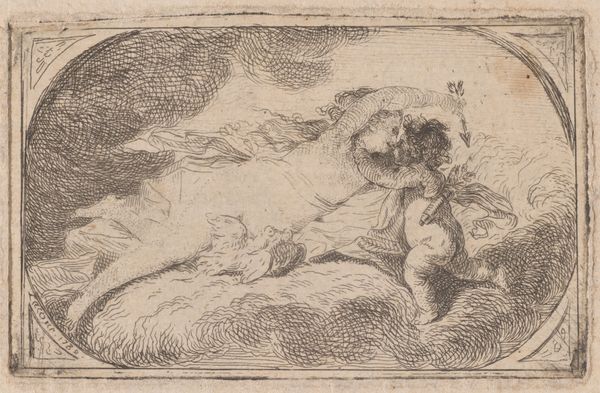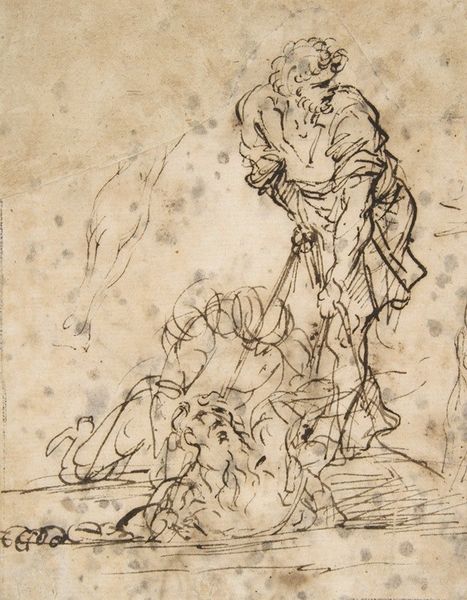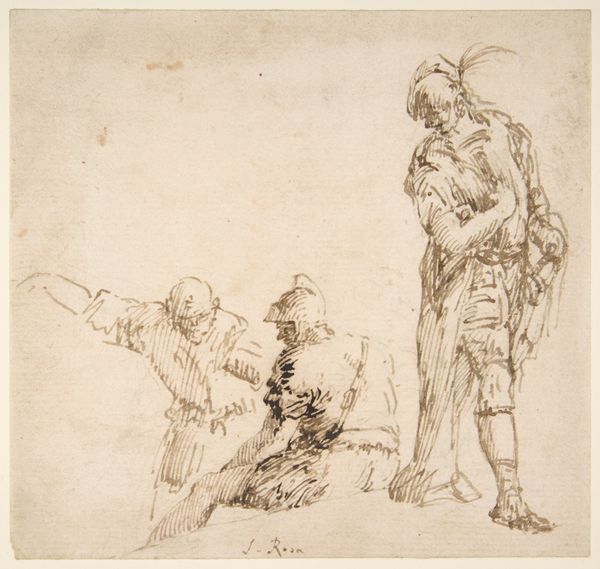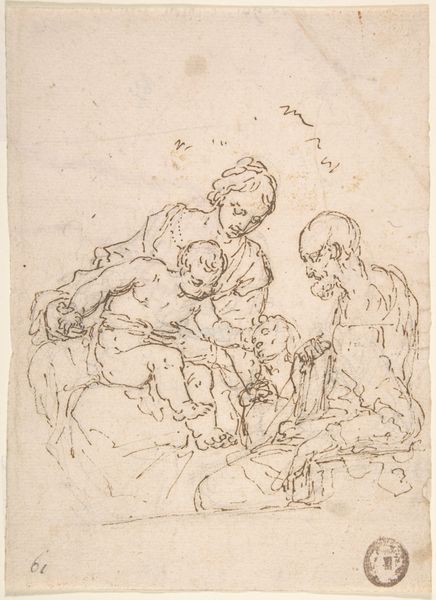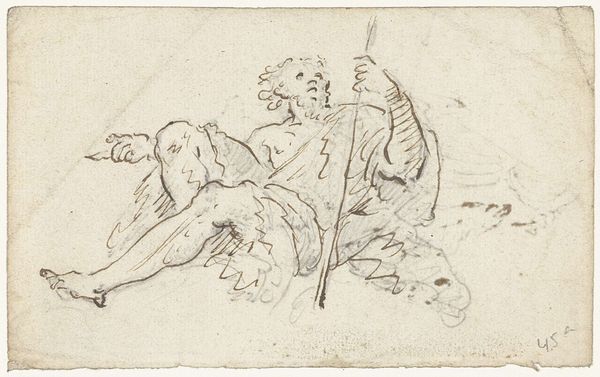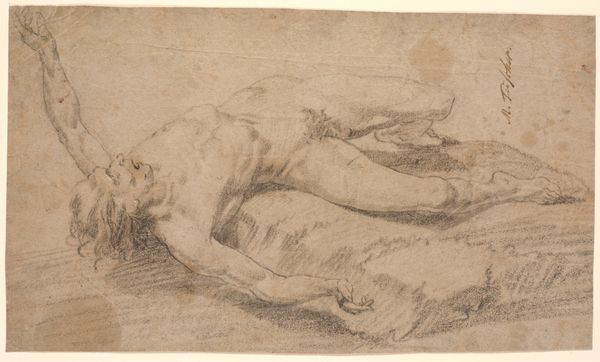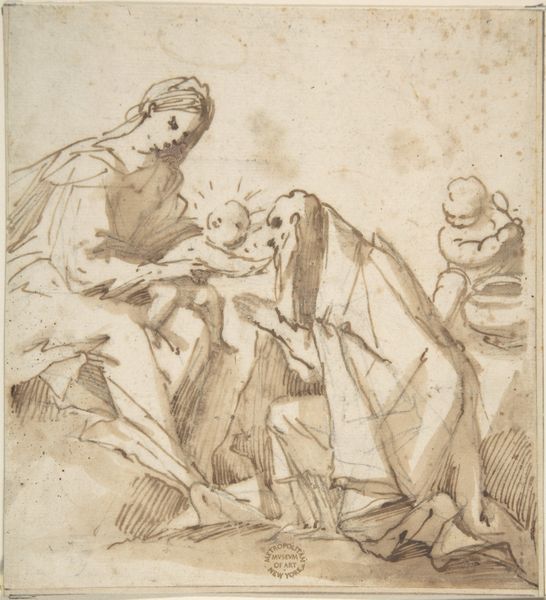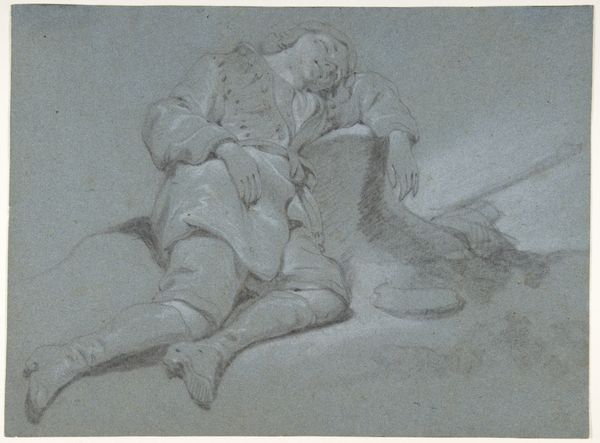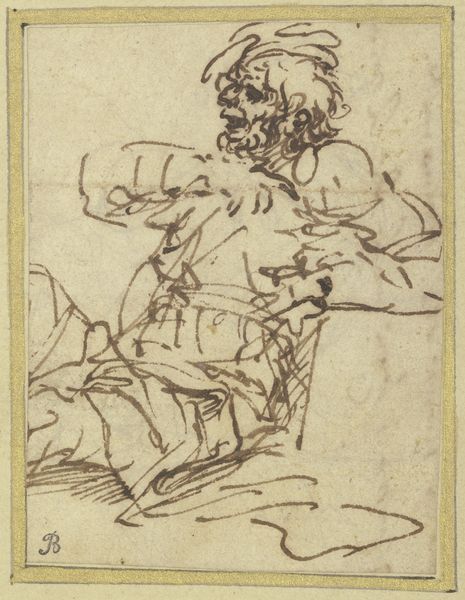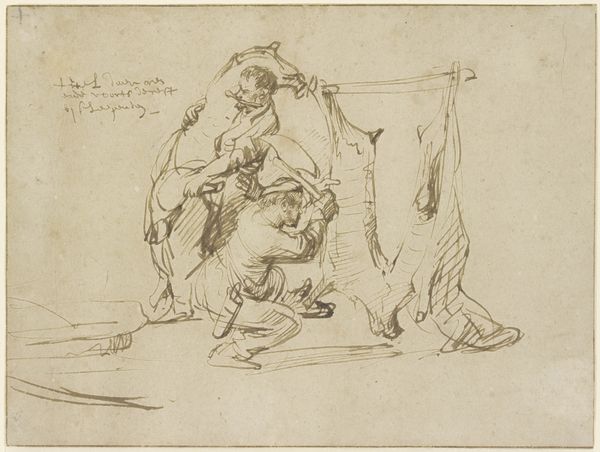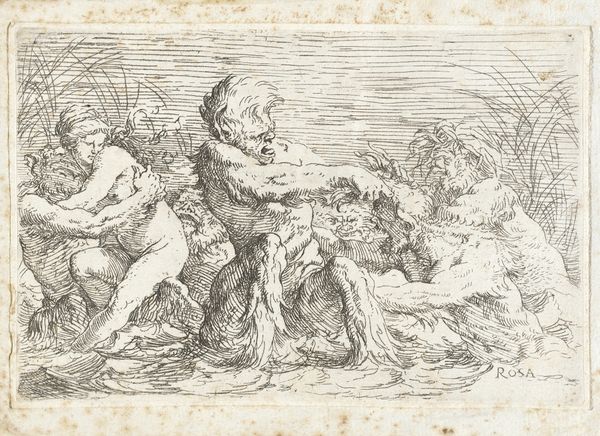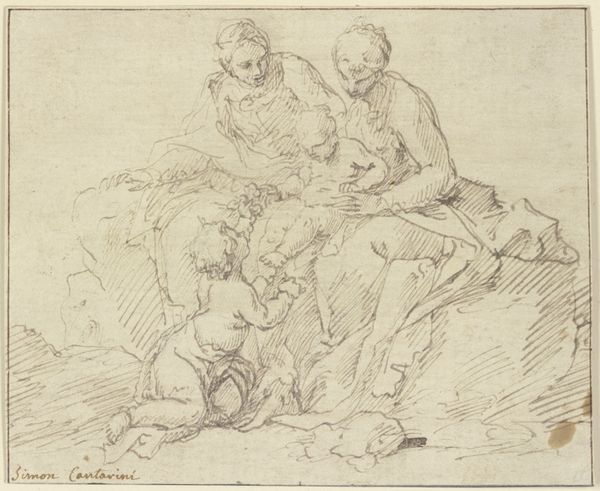
Study of a Youth with his Head Turned to the Left and Leaning on his Right Elbow 1580 - 1629
0:00
0:00
drawing, paper
#
portrait
#
drawing
#
dutch-golden-age
#
mannerism
#
paper
#
11_renaissance
Dimensions: 3 1/4 x 4 5/8 in. (8.2 x 11.7 cm)
Copyright: Public Domain
Editor: Here we have Jacques de Gheyn II's "Study of a Youth with his Head Turned to the Left and Leaning on his Right Elbow," dating roughly from 1580 to 1629. It’s a drawing on paper, currently at the Met. I find his posture conveys such a weary, melancholic feeling. How do you interpret this work? Curator: It strikes me as a study in posture as conveying inner feeling. In the Mannerist style, it’s less about exact representation, and more about hinting at emotion through form. Note how the downturned head and supporting elbow create a closed, almost self-protective shape. Editor: I see that, like he's burdened by something internal. Are there any specific symbols common at the time that relate to such posture? Curator: It’s less about formal symbols in this case, and more about archetypes. Think about the "melancholic" or "contemplative" figure that appears throughout art history, representing the weight of thought, the burden of knowledge. This pose taps into that well of imagery. He looks almost like he is carrying an Atlas-like weight on his shoulders. Editor: That connection to the contemplative figure throughout history is something I had not considered. Thanks! Curator: Notice the use of light and shadow. The face is heavily shadowed, almost obscured, which amplifies that feeling of internal struggle. Think of Caravaggio’s tenebrism, emphasizing spiritual drama through darkness. Is there also another person included in this picture? Editor: You're right, just barely there in the lower right! The inclusion really adds something about his subject’s relationships, even loneliness. I guess I see the echoes of loneliness through the drawing itself, if that makes sense? Curator: Precisely! We are never really alone in how we read symbolic gesture. I noticed how my associations influence me; every generation carries symbols anew.
Comments
No comments
Be the first to comment and join the conversation on the ultimate creative platform.
